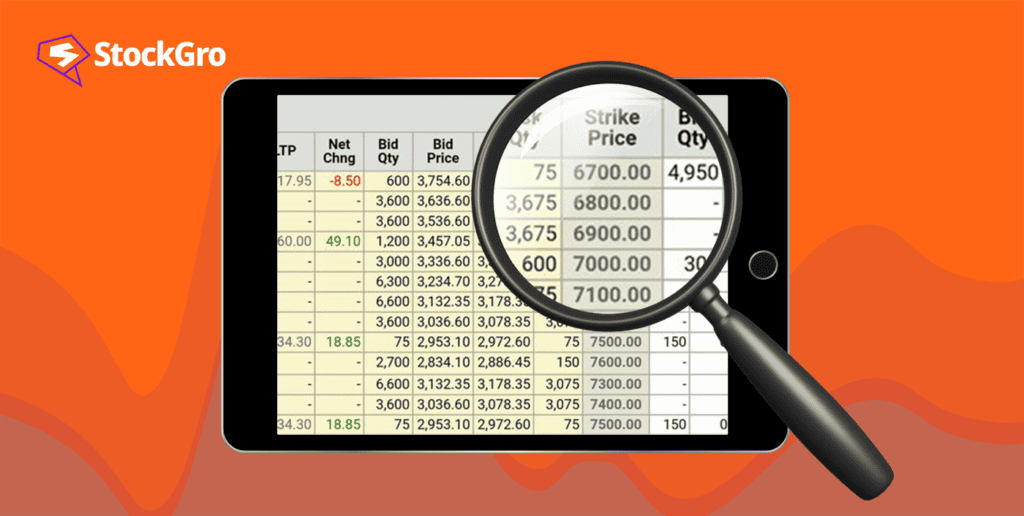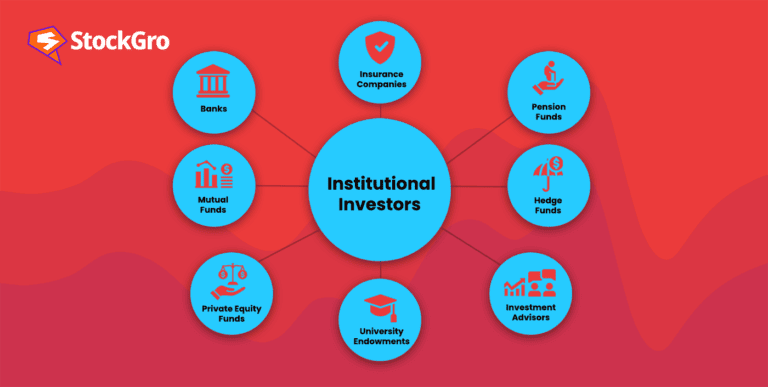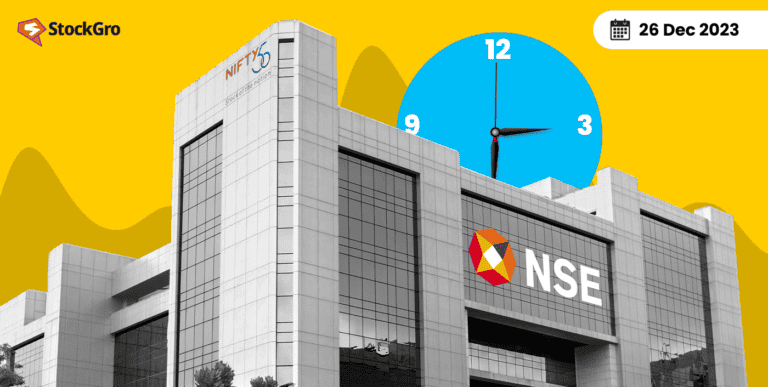
You might have come across the concept of options trading if you’ve ever researched trading. Options are intricate financial tools with significant potential for both profit and loss. However, it can be much more complicated to trade options than stocks.
Although options can be used for speculation, protecting your downside is perhaps the best use for them. One strategy to make money when the markets aren’t rising is to trade options. One crucial choice a trader must make when working with an options contract is selecting the appropriate strike price.
In this article, we will explore what strike price means in options trading, how to calculate option strike price, and how to choose the right price for call options. But before that, let’s understand what options trading is.
You may also like: How to trade in options and maximise your profit?
Understanding option trading
Options contracts can be traded without purchasing the asset in issue. Investors use tradable contracts to predict future investments without purchasing speculative assets. This kind of trading allows investors to choose not to buy an asset at a particular price or date.
For instance, Nifty 50 options let traders make predictions based on this benchmark index, sometimes used as an indicator for the whole Indian stock market. If profitable, the trader can choose to buy or sell the underlying at the predetermined price.
That being said, if unprofitable, a trader is under no obligation to execute the options. If a trader chooses not to exercise their options, the sole amount of money they might lose is the premium they paid for the contracts. Because of this, speculating on a wide variety of asset classes may be done relatively inexpensively via options trading.
What is the strike price in options trading?
A strike price is the agreed price at which a buyer can purchase or sell an asset under an option contract. The strike price of options is the primary factor determining the profit or loss for every option trade and the break-even point. The asset’s stock price fluctuates throughout the option contract, but the strike price stays fixed.
Application of strike price in different option strategies
Straddle
In some instances, two options may have the same expiry date, where they have the call and put option at the identical strike price. This combination, sometimes referred to as a straddle, is a tactic that lets the buyer of the option profit from a considerable shift in the underlying asset in any direction.
Long straddle: In the long straddle method, the buyer purchases a long call option and a long put option for the same expiration date and at the identical strike price. Here, the trader takes advantage of the increased volatility and significant movement of the underlying assets in either direction to make profits.
Short straddle: Similar to the long straddle strategy, short straddles don’t have any directional bias as well and are market-neutral. In short straddles, the trader sells a short call and a short put for the same expiration date at the same strike price. Where long straddles need satisfactory movement from the underlying asset to generate profit, short straddles need minimal movement to do so.
Strangle
Strangle is a popular strategy in options that involves the trader holding a position on the same underlying asset and expiration date in both call and put options but with separate strike prices. A strangle strategy enables the investor to profit from price swings in the underlying asset despite the direction.
Long strangle: The long strangle involves buying a call option (out-of-the-money) and a put option (out-of-the-money). While a long strangle has less upfront money to enter, it requires a subsequent move or high volatility to make a profit.
Short strangle: A short strangle, on the other hand, requires selling an out-of-the-money short call and out-of-the-money short put option and has a higher upfront profit. However, a short strangle also exposes the trader to unlimited risk on both sides (above and below the strike price). This strategy depends on nominal price movements, low volatility, and time decay.
Butterfly
In options trading, the butterfly strategy involves buying and selling four options (calls or puts) at separate strike prices and with the same expiration date. This strategy is useful when a trader anticipates the price to remain within a particular range and not change much. There is minimal risk and little profit with the butterfly technique.
Iron condor
Iron condor involves two puts and two calls (both long and short). The strategy also depends on four strike prices for the identical expiration date. The trader earns maximum profit in this strategy at the expiration date if the underlying asset closes between the middle strike prices.
Spread
The strategy of buying and selling multiple options of similar type (call or put) with the same underlying asset is known as an option spread. Although the options are similar, in this case, the expiration date and strike price may vary.
As we can see, the strike price is the most crucial component in all option strategies.
Example of how the strike price impacts the profitability:
Suppose you buy a call option on Tata Motors for Rs. 10 per share, with a strike price of Rs. 400 and an expiry date of 30th November 2023. This gives you the right to buy 1000 shares at Rs. 400 each before that date.
If the share price goes up to Rs. 450 by 25th April 2023, you can use your option and buy the shares at Rs. 400, then sell them at Rs. 450. You will make a Rs. 30,000 profit (Rs. 30 per share).
If the share price goes down to Rs. 350 by 25th November 2023, you will not use your option, as you can buy the shares cheaper in the market. You will lose Rs. 10,000 (the premium you paid).
Also read: Option chain for smarter online trading
How to choose a strike price for call options in India?
Decide which market to trade: When trading options, you have access to a variety of markets, such as indices, commodities, and currency.
Consider liquidity: A trader must consider liquidity when choosing strike prices for call options. High liquidity indicates that the strike price is close to the support or resistance level of the underlying asset.
Verify the bid-ask spread: A trader should never execute without first checking the bid-ask spread. The bid-ask spread is the gap between an asset’s bid and ask prices in the market.
Purchasing OTM options: OTM options are less expensive to purchase as they have no intrinsic value. Hence, some traders prefer out-of-the-money options.
Also read: Stock options – The beginner’s guide to the options market
How to calculate the option strike price?
Each security or underlier that is listed for trading in derivatives has its strike price determined and announced by the exchange. As far as we are aware, trading in derivatives includes securities with a larger open float and regular trading volume.
Multiple requirements must be met for an asset to be traded in options, among which volatility, risk appetite, and the daily price shift standard deviation are few. The entire contract value might potentially be taken into account by the stock exchange as a qualifying factor.
Conclusion
Before you start trading options, having a firm grasp of options is a good idea. The strike price is a crucial aspect in evaluating the moneyness of an option. It is also a prerequisite for figuring out any option position’s break-even point and profit or loss. Opting for the ideal strike price is crucial for an options trader. An option position’s profitability is largely dependent on the strike price.

